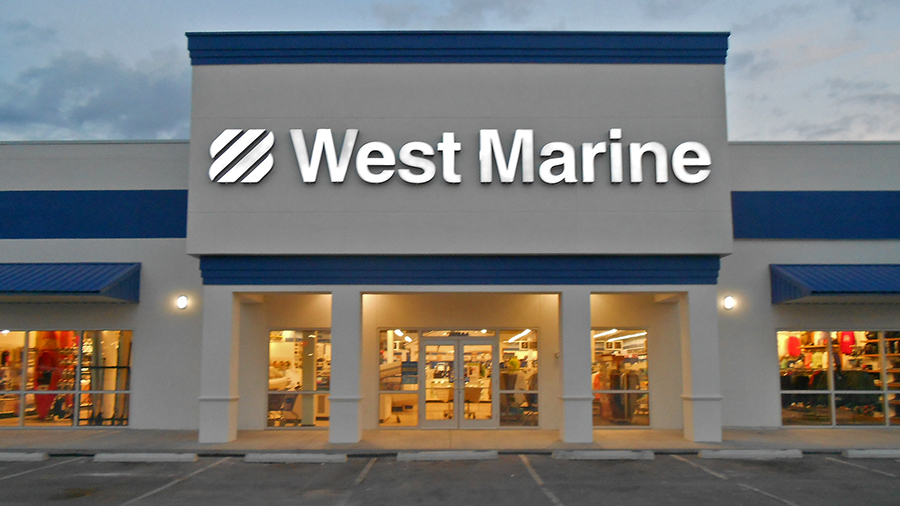S&P Global Ratings raised its debt ratings on Rising Tide, doing business as West Marine, after the marine aftermarket retailer was able to complete an out-of-court restructuring, exchanging previous debt for equity consideration and adding new debt to the capital structure.
S&P raised its issuer credit rating on Rising Tide to ‘CCC+’ from ‘SD’ (selective default). The outlook is negative.
The ‘CCC+’ rating reflects S&P’s view that continued operational and management risks render the capital structure potentially unsustainable. The negative outlook reflects the risk that West Marine could face default–selective or conventional–over the long term absent sustained traction in operating performance amid a slowing economy, operational uncertainty, and high management turnover.
S&P said, “Our ratings reflect Rising Tide’s significantly reduced debt and interest burden following the completed out-of-court restructuring.
“Rising Tide reduced its debt burden by more than $590 million, to $177 million from nearly $770 million. This includes the exchange of all 1A, 1B, and 2A term loan facilities for equity, equity warrants, and additional funding rights. Moreover, the company achieved new funding by reducing asset-backed lending revolver borrowings and a new first-lien $137.5 million term loan. The new term loan matures in 2028, providing time to execute turnaround initiatives. In addition, the company has the option, for the first 18 months, of payment-in-kind (PIK) interest with pricing of SOFR plus 100 basis points (bps) in cash and SOFR plus 700 bps in PIK. Rising Tide could alternatively elect to pay interest in cash-only at a rate of SOFR plus 600 bps if turnaround efforts rapidly materialize. We expect the new capital structure to provide significant interest savings and time for management and the financial sponsors to improve performance.
“We continue to view the capital structure as potentially unsustainable over the long term because of expected performance challenges in the near term, as well as weak credit metrics.
“We project S&P Global Ratings-adjusted credit metrics to remain elevated following the restructuring and still see meaningful operational and financial risks. This includes S&P Global Ratings-adjusted leverage of more than 6x and adjusted interest coverage of less than 2x through the end of 2024. Rising Tide’s ability to generate significant sales growth and profitability remain uncertain amid our expectation for weak economic activity and persistent–though softening–inflation over the next 12 months. Sluggish economic activity would likely reduce consumer spending on boating products while persistent inflation could cause customers to divert spending toward more essential items. Moreover, we see heightened risks because of the business’ seasonality and relatively short window to generate meaningful sales and cash flow, largely during the summer months when boating increases.
“Riding Tide’s turnaround initiatives carry significant risk, and a path to sustainable performance may remain elusive.
“The out-of-court restructuring gives Rising Tide more than a year to meaningfully improve sales, profitability, and cash flow. The restructuring includes additional liquidity that we think will give the strategic initiatives time to gain traction. That said, significant management turnover over the last year heightens uncertainty in the company’s ability to execute on its operating strategies. Sales and profitability have been weak over the last two years, a trend we expect to continue over the near term. At the same time, S&P Global Ratings-adjusted EBITDA margins were very weak over the last two years, including 3.9 percent in 2021 and 3.2 percent last year. (We expect adjusted margins of about 3 percent this year.) While we project a meaningful rebound in sales and profitability in our base case, we believe management’s ability to sustainably improve performance may be difficult as economic growth and consumer confidence remains uncertain. We forecast minimal reported free operating cash flow (FOCF) generation in our base-case projections (flat in 2024) and believe a shortfall in sales or EBITDA will increase the risk of continued liquidity stress.
“The negative outlook reflects the risk of a downgrade if sales trends and profitability fail to stabilize, straining cash generation and pressuring credit metrics, which could lead to a default within the next 12 months.”















